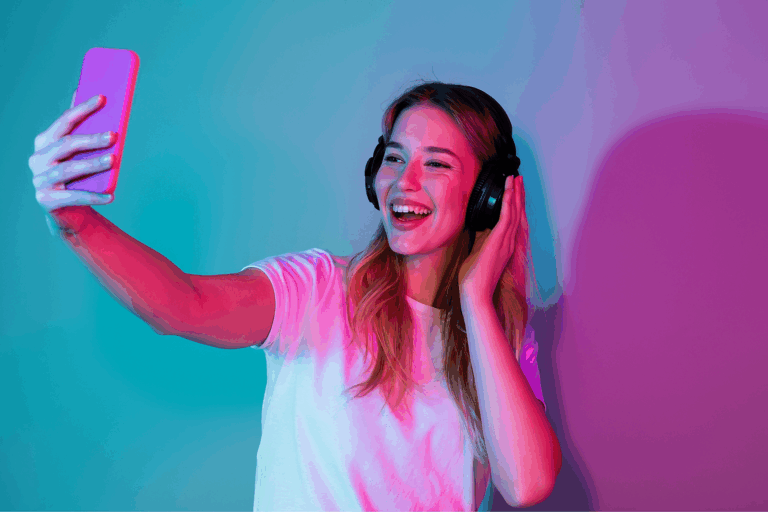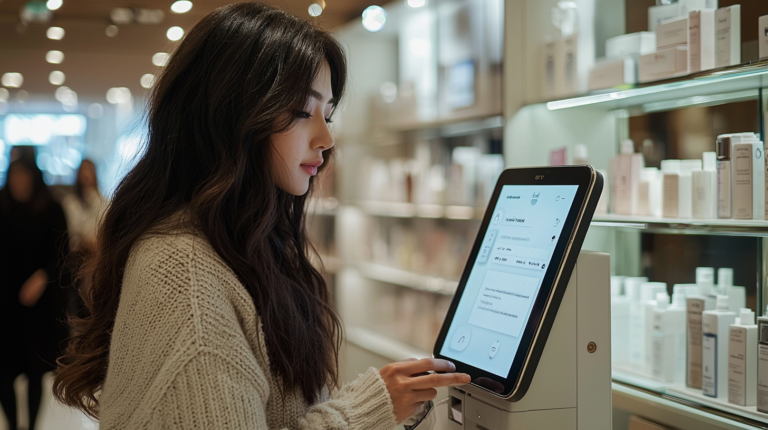The Rise and Stay of Social Shopping

Social media platforms have made it easier for people to stay connected with one another. These platforms have become a place where people can share updates in their lives, get inspired and even explore new brands and products. Thanks to these platforms, consumers can now shop via social media. From digital stores on Facebook and Instagram Shops, Instagram tagged products, and Pinterest’s shoppable pins — social platforms are changing the way people shop, especially within fashion e-commerce marketing.
Facebook Shops
Facebook has always been used to connect users with the things they love. Family, friends, a favorite sports team, maybe even a recipe account that introduced new family-favorite dishes. During times of uncertainty where social distancing is a necessity, Facebook has allowed us to stay connected. Making it easier to keep in touch with what everyone’s quarantine activities are, and giving us a laugh when we need it most. Now Facebook has introduced Facebook Shops so we can stay safe and still support our favorite brands. This new addition to the social platform makes it easy for an ecommerce brand to set up a store online that reaches their customers on Facebook. Thanks to Facebook Shops and social selling, you can shop for another pair of your go-to sweat pants while you’re lounging comfortably at home.
These new social features are a game-changer for social shopping, making it easy for brands to set up a store and reach their customers. Facebook Shops has also allowed for a more savvy way of serving audiences exactly what they want with the catalog feature that promotes the brand’s bestsellers. Backed with e-commerce functionality that allows customers to buy on Facebook or redirect them straight to the product page, the only thing left to do is add to cart and check out.
Facebook Shops is here to stay and will continue to make waves in the way users shop. From companies moving to remote work positions to online learning for students, this was the natural next step in this era of advancement in technology. Instead of searching every website for the best deals and our next must-haves, online shopping now finds us.
Instagram Shops
Like Facebook Shops, Instagram Shops is a customizable, immersive full screen storefront feature that allows businesses to build their brand story and initiate product discovery. This native shopping experience is easy and simple due to Instagram’s seamless in-app browser — allowing potential customers to explore and purchase products without ever having to leave the app. Instagram Shops allows people to purchase products from creator’s posts, Instagram Lives, business profiles and collections.
Specifically within the United States, Instagram shopping permits all eligible businesses and creators to sell their products directly on Instagram free of charge. Instagram creates storefronts for businesses based on people’s existing behaviors; therefore, it is easier to reach potential consumers. Within their business profile, brands can advertise products and launch campaigns directly on Instagram. Thus, driving consumer traffic, product discovery and sales.
With the ever-evolving updates to the e-commerce world, companies are quickly adapting and implementing social shopping to grow their businesses. According to Instagram, 70% of avid shoppers utilize the app for product discovery. Similarly, 87% of people say influencers encouraged them to make a purchase. With these statistics in mind, there is no doubt that the power of social shopping is exponential. Therefore, it is essential that brands continue to listen to their consumers and track results because social shopping is not the future — it’s the now.
Along with Instagram Shops, Instagram is offering further social platform sales for brands with tagged product posts — allowing users to buy a product directly from a brand’s Instagram story or feed. These innovative social features allow influencers to seamlessly connect their audience with the brands and products they are wearing or promoting, bridging the gap between potential customers and purchases. The ability to purchase products directly through photos and stories has also allowed influencers and brands alike to monetize their feeds.
Social media shopping has become easier than ever before. Consumers have the ability to browse their favorite Instagram feeds, while tagged product posts act as a catalog. This social commerce feature enables Instagram users to readily make purchases through tagged product posts, offering a simplistic shopping experience for both brands and consumers.
By transforming Instagram followers into customers, tagged product posts have an immense impact on social shopping and influencer marketing. Retail trends are shifting rapidly, as e-commerce sales are booming. Amazon’s new social shopping trends are one of the many brands taking advantage of this shift. Studies show that 90% of business decision makers believe digital commerce will become their most profitable and significant sales channel in the near future. The pandemic has accelerated this conversion into online social commerce, causing many retailers to redirect their spending and strategies to serve online shoppers. Tagged product posts facilitate the collaboration between brands and influencers by allowing influencers to directly link promoted commodities to their target audience.
Pinterest, unlike other social platforms, primarily acts as a platform that generates inspiration for its users. Whether you’re looking to spice up your wardrobe, discover unique home decor (or find a step-by-step way to DIY that home decor) or even if you need help finding a wedding dress ideas like men’s formal wedding attire for your big day, Pinterest is the go-to platform for visual inspiration. Pinterest’s unique array of content and users makes it an excellent platform for e-commerce. Users can shop on Pinterest through product pin images that are formatted to display pricing information, availability, product titles and descriptions to let users know that products are shoppable at the click of a button.
Similarly, shop the look Facebook ads can tag specific products within fashion-geared images so users can fill their wardrobes with the exact outfits they see in their feeds. The Pinterest Shop tab also provides a platform where users can shop product pins directly. The beauty of e-commerce through Pinterest is that shopping campaigns are integrated into user’s feeds and can serve as both a tool for visual inspiration, as well as purchasing.
Aside from the seamless design of shopping campaigns in Pinterest feeds, Pinterest has completely changed the social shopping game with the introduction of the visual search tool. Users are able to snap or upload a picture of an item they are looking for and Pinterest will generate images and shoppable pins that resemble the image. This feature caters to their diverse user base and allows pinners to solidify their vision based off of a visual. With 80% of users starting with visual search when shopping, Pinterest has taken their position as a visual inspiration platform to a completely new level with this feature and streamlined social shopping into a simple click of a camera.
Along with the other social platforms, Pinterest has successfully continued to expand its offerings, especially with the visual search function that can recognize 2.5 billion objects across home, fashion and more. Pinterest’s advances have successfully adapted to the push for social shopping with 93% of their users specifically visiting the Pinterest site to purchase products. While social shopping has become the new norm, Pinterest has simplified this experience and continues to do what it does best —inspire us.
Our Editorial Standards
Reviewed for Accuracy
Every piece is fact-checked for precision.
Up-to-Date Research
We reflect the latest trends and insights.
Credible References
Backed by trusted industry sources.
Actionable & Insight-Driven
Strategic takeaways for real results.










